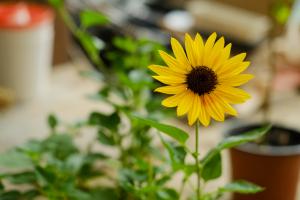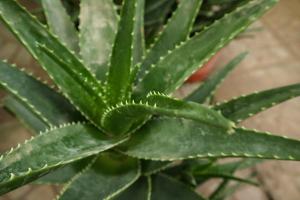Should Water Overflow Bottom of Planter?
When it comes to watering plants, there are many contradictory opinions on how much water to apply and if it is beneficial for the water to actually overflow from the bottom of the planter. In this article, we will explore the reasons why water should or should not overflow from the bottom of a planter.
What Happens When Water Overflows?
Water overflow can be beneficial or detrimental to the health of your plants, depending on the type of plant and the planter used. When you water a plant, the soil absorbs some of the water and the rest tends to drain out through the bottom. If the pot does not have drainage holes, the water will accumulate and may cause root rot, as the roots will be constantly soaked.
If the pot does have drainage holes, the water will flow out, flushing out excess salts and minerals that are harmful to plant growth. However, if the soil in the planter is too compacted or heavy, the water will not drain properly and may cause issues such as waterlogging, which could prevent the plant from absorbing nutrients and even cause root rot.
Why You Should Let Water Overflow
While it may seem counter-intuitive, allowing water to overflow from the bottom of a planter can be beneficial to the health of the plant, as it ensures proper drainage and keeps the soil in good condition. The excess water will help flush out salts and minerals that accumulate in the soil over time, which can damage your plant if left untreated.
In addition, letting water overflow from your planter can stimulate deeper root growth, as it encourages the roots to search for water deeper within the soil. This can help improve the overall health and longevity of your plant, resulting in a stronger and more resilient plant.
Why You Shouldn't Let Water Overflow
While letting water overflow can be beneficial to the health of your plants, certain factors may make it harmful. For example, if the pot is too large or the soil is too heavy, the water may not drain properly and may end up pooling at the bottom of the planter, which could lead to root rot and other issues.
Another factor to consider is the type of plant you are growing. Certain plants, such as succulents or cacti, do not require as much water and can actually be harmed by overwatering. In these cases, allowing water to overflow may be detrimental to the health of the plant and should be avoided.
Conclusion
Ultimately, whether or not to let water overflow from the bottom of a planter depends on several factors, including the type of plant, the size of the planter, and the condition of the soil. Generally, allowing water to overflow can be beneficial to the health of your plants, as it helps flush out excess salts and minerals and encourages deep root growth. However, certain plants or conditions may make it harmful, in which case it should be avoided.
In conclusion, it is important to understand the needs of your plants and to take appropriate measures to ensure their health and longevity.

 how many times do yo...
how many times do yo... how many planted tre...
how many planted tre... how many pine trees ...
how many pine trees ... how many pecan trees...
how many pecan trees... how many plants comp...
how many plants comp... how many plants can ...
how many plants can ... how many plants and ...
how many plants and ... how many pepper plan...
how many pepper plan...































